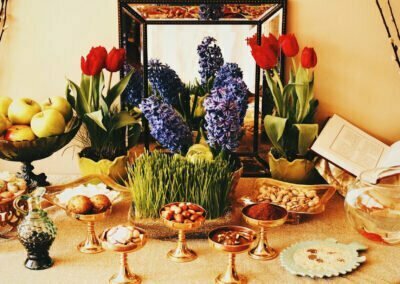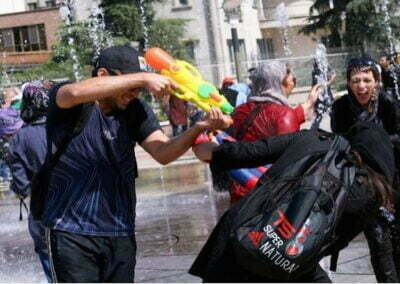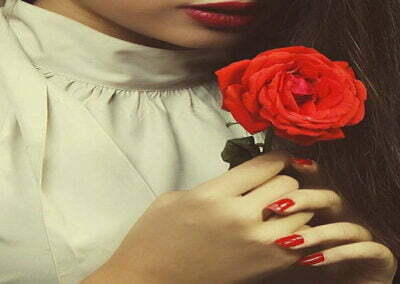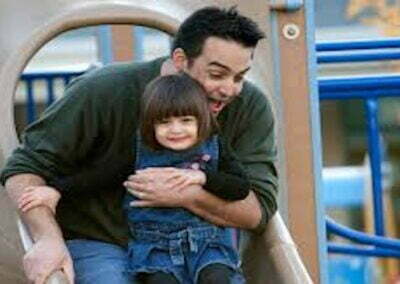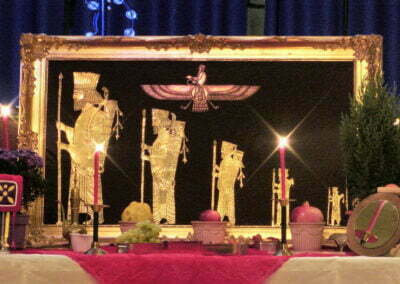the Iranian solar year begins on March 21st and begins with Hegira in 662 AD when Mohammed emigrated from Mecca to Medina. 21/23 March Iranian New Year – 1 April Islamic Republic day – 2 April Sizdah bedar, 13th day of the new year) – 4 June day of Imam Khomeini leader of the Islamic Revolution.
Today Nowruz, the Iranian New Year is always celebrated with effort. Iranians, even those who live abroad, use to prepare 7 sin (table of Nowruz) sitting around the passage in the new year, wearing new clothes offering children Eidi (rolls of new money or gifts) sprinkling rose water, eating sweets and celebrating on the 13th bedar, (13th day of the new year) Muslim Iranians light candles as a symbol of the respect that the ancient Persians had for fire, and place the Koran on the Nowruz table to show all their esteem they have for this sacred text . in recent years, in honoring the nowruz, Iranians have shown all their attachment to national customs and traditions while firmly believing in Islam. a few days before New Year they take some wheat seeds and put them on a plate with a little water to germinate, the children dress up as Haji firuz, a western Santa Claus, dressed in bright, baggy pants, a black vest and a face painted in black. wearing make-up and wearing satin costumes, bright colors, these haji firuz singing and dancing, they go through the streets with tambourines and trumpets, and bring good humor, and the news of the arrival of the new year. , the year (4 shanbe suri) they light the bonfire in the streets and people jump over the flames. shouting: Give me your beautiful red color and take away my sickly pallor. Haji firuz children run through the streets drumming on pots and spoon thalami called ghashoghzani, to kick out the last unlucky Wednesday of the year, while knocking on doors asking for offers. A few days before the new year in each family a special tablecloth called haft sin which means seven (S) is spread. On which they place seven plates each of which in Persian begins with the letter “s”. the symbolic dishes are sabze, or sprout (fresh herbs sprouted in the dish) usually of wheat and lentils
represents birth. Samanu or creamy sweet of bud, seeb or apple, representing beauty, senjed or dried fruit of the lotus tree, representing love, seer or Aligi representing medicine and patience, somag or berry dek sumac (color spice red normally used to flavor meat) which represents the color of the dawn, the serkhe or vinegar which represents age and patience. on the tablecloth of haft sin said sofre coins are also placed represents prosperity and wealth, a basket with painted eggs representing fertility, a goldfish in a bowl, representing life a bottle of pink water with magical powers, they win there is a brazier to burn the wild rue, a sacred herb, special of incessant, whose smoke smoldering under the ashes to guard evil spirits. A vase of hyacinths or daffodils, a mirror that represents the image and reflection of the creation that according to a Persian tradition took place on the first day of spring, the Quran with blanks to remember fidelity to Islam. -mobarak (happy new year) with a cannon shot fired by the military the arrival of the new year is announced in Tehran kisses and hugs and exchange of greetings, generally the party is strictly between family members, who then begin to exchange gifts, these are generally shiny new banknotes. the New Year party lasts 12 days, that is the first 12 days of the year. on the 13th day it is mandatory for every Persian to be away from home. According to tradition this is the only way to keep the evil spirits far from home, in their last attempt to enter they ring and if they find no one they go away. if instead it is someone who opens the evil spirits enter and that is of bad omen for those who live there. So everyone goes out for a picnic. Here the families bring the herbs sprouted for New Year’s because it is customary to throw them into the river that takes them away as a good sign of good wishes. Women, especially marriageable girls, knot them before throwing them into the water as a wish for a safe and lasting bond of love with their man.
Important Iranian holidays are: Nowruz (Iranian New Year) – starts March 21 Sizdah bedar (nature day) -Jashn-e-Tirgan (Water Festival) -Jashn-e-Sadeh (Fire Festival)
Jashn-e-Mehregan (Autumn Festival) -Shab-e-Yalda (Winter Festival) -Charshanbeh Suri.
Iranian celebrations


